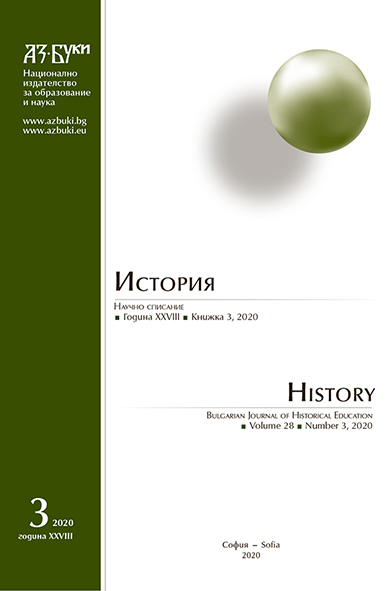Image of the Other in Teaching History: Humanistic Potential of the Intersubjective Approach
Image of the Other in Teaching History: Humanistic Potential of the Intersubjective Approach
Author(s): Svitlana HanabaSubject(s): History, Social Sciences, Education, Cultural history, Comparative history, Ethnohistory, History of ideas, Military history, Oral history, Political history, Social history, Special Historiographies:, Vocational Education, Adult Education, Period(s) of Nation Building, History of Communism, Historical revisionism, Post-Communist Transformation, Inclusive Education / Inclusion
Published by: Национално издателство за образование и наука „Аз-буки“
Keywords: the Other; intersubjective approach; historical education; tolerance; critical thinking; dialogue; humanistic potential Civilization boundaries Цивилизационни граници
Summary/Abstract: Understanding the socio-cultural significance of the experience of the past in solving the problems of the present causes a growing interest in historical education and focuses on finding effective methodological approaches to translating knowledge about the past through education. One such approach is an intersubjective approach. The paper deals with the humanistic potential of an intersubjective approach to understanding the Other and fostering the ability to compromise through historical education. A well-considered attitude towards the Other, an inner interest and understanding of the significance of the other presence implies that in the social deprivation of hostility, the inadmissibility of domination and oppression in my Self of the world of the Other Being will be deprived. Both are understood as correlates of intersubjective constitution of reality. In dialogue interaction Otherness is not subordinated, it is assigned to my Self, it remains an “insoluble” individuality. Content analysis of history books of Ukraine has shown that they are conceptually sustained, lacking stereotyped and impartial assessments of the racial, ethnic, cultural nature of the Other. However, ambiguous historical events involving different peoples and states are not alternatively presented. The narrative in the textbook undoubtedly should be the Ukrainian ethnic group as the core of national history. At the same time, using the anthropological and territorial principles as the core of the story, the textbook should strive for Ukraine to be perceived as space where other ethnic communities whose existence is an integral part of Ukrainian history reside alongside Ukrainians. Relevant in overcoming the false image of historical education is the development of the ability to think critically about historical facts, to give them their own judgment. Understanding of the historical process from the point of view of an intersubjective approach will contribute to the formation of a person’s tendency to cultural tolerance, tolerance and dialogue with the Other, the realization that the Other is also entitled to a mistake or his own ratio, the ability to see the world in all its diversity and uniqueness.
Journal: История
- Issue Year: 28/2020
- Issue No: 3
- Page Range: 302-321
- Page Count: 20
- Language: English
- Content File-PDF

